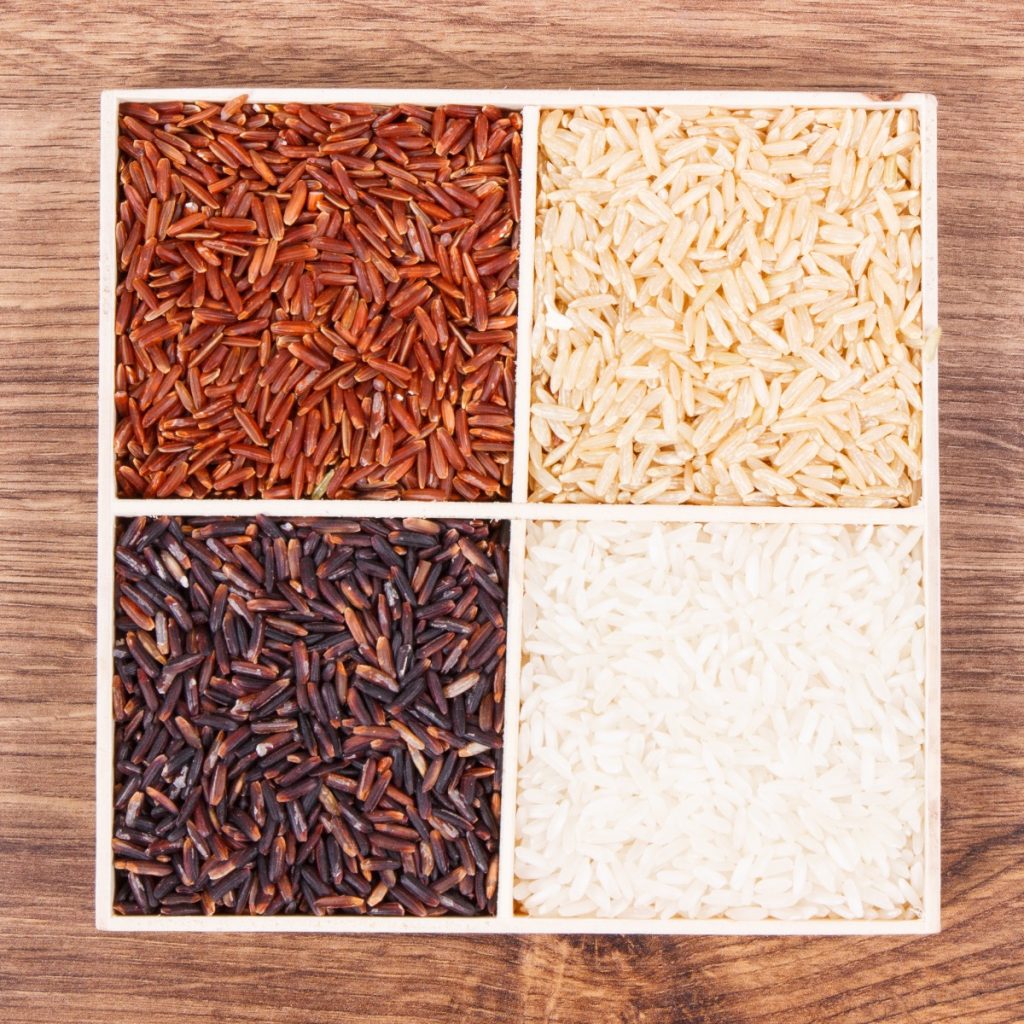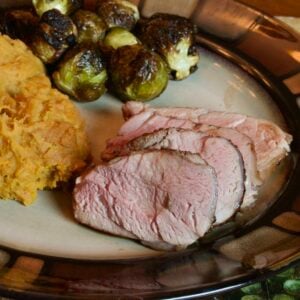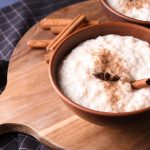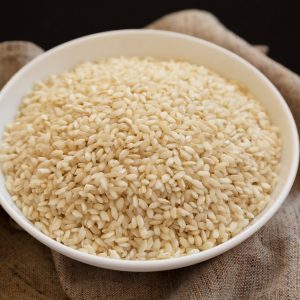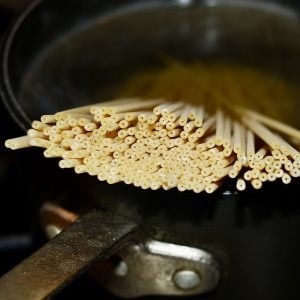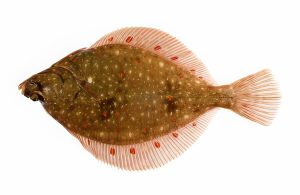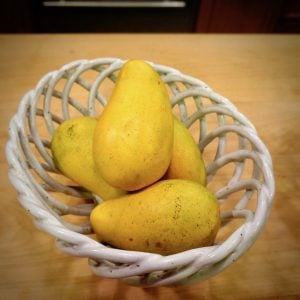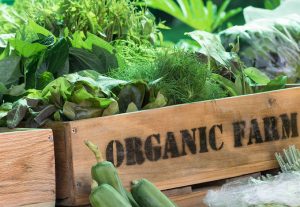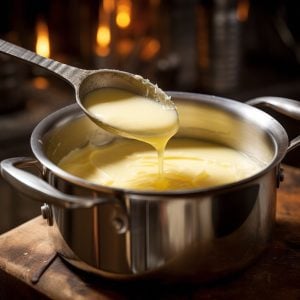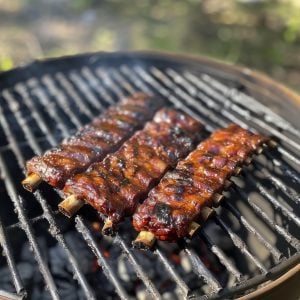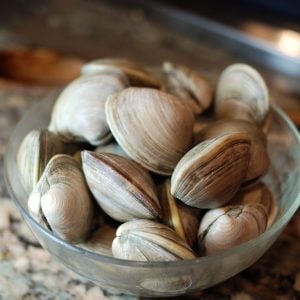All About Rice
We cook with a lot of rice in our house. It goes well with many dishes and makes a beautiful meal conduit. In this post, I’d like to look at rice from several points of view, so you can better understand how important rice is in so many cultures.
What Is Rice and How Is It Used In Cooking?
Rice is a cereal grain and one of the most important staple foods for many of the world’s human population, especially in Asia. It is the seed of the grass species Oryza sativa (Asian rice) or Oryza glaberrima (African rice).
Moreover, it is the agricultural commodity with the third-highest worldwide production, after sugarcane and maize.
Popularity
Rice is one of the world’s most widely consumed staple foods, particularly popular in Asian countries. According to the Food and Agriculture Organization of the United Nations (FAO), rice is the primary source of caloric intake for more than half of the world’s population, particularly in Asia, where over 90% of the global rice production and consumption occurs.
In China, rice is a staple food almost everyone consumes; it is considered a symbol of wealth and prosperity. In India, rice is also a staple food, and it’s consumed in various forms, such as steamed, fried, and in the form of a sweet dish called Kheer.
In Japan, Sushi, a popular dish made of vinegared rice, is a staple food. In Southeast Asia, rice is the staple food for most countries, and it’s consumed in various forms, such as steamed, fried, and mixed with other ingredients to make traditional dishes.
In other parts of the world, rice is consumed but not to the same extent as in Asian countries. For example, in the United States, rice is consumed more as a side dish than a staple food. However, rice is an important staple food in Africa, particularly in West Africa, where it’s consumed in various forms, such as steamed, fried, and mixed with other ingredients to make traditional dishes.
Forms of Rice
Rice can be found in many forms: white rice, brown rice, wild rice, basmati, jasmine, arborio, and sushi rice. Each rice type has unique properties, including texture, flavor, and nutritional value.
White rice is the most common form of rice consumed worldwide. It is polished rice with its outer husk, bran layer, and germ removed. This process removes much of the fiber, vitamins, and minerals, making the rice more shelf-stable and easier to cook.
Brown rice, on the other hand, is a whole-grain rice that still has the bran layer and germ intact. This means it retains more natural nutrients like fiber, vitamins, and minerals. As a result, it has a nuttier flavor and a chewier texture than white rice.
Rice is typically cooked by boiling or steaming, and it can be served as a side dish, used in soups, salads, and main courses, as well as desserts, puddings, and sweet dishes.
It is a versatile ingredient, and its nutritional value depends on the type of rice and the way it’s processed, but it’s a good source of carbohydrates; some types of rice are gluten-free, and it’s low in fat, cholesterol-free, and sodium-free.
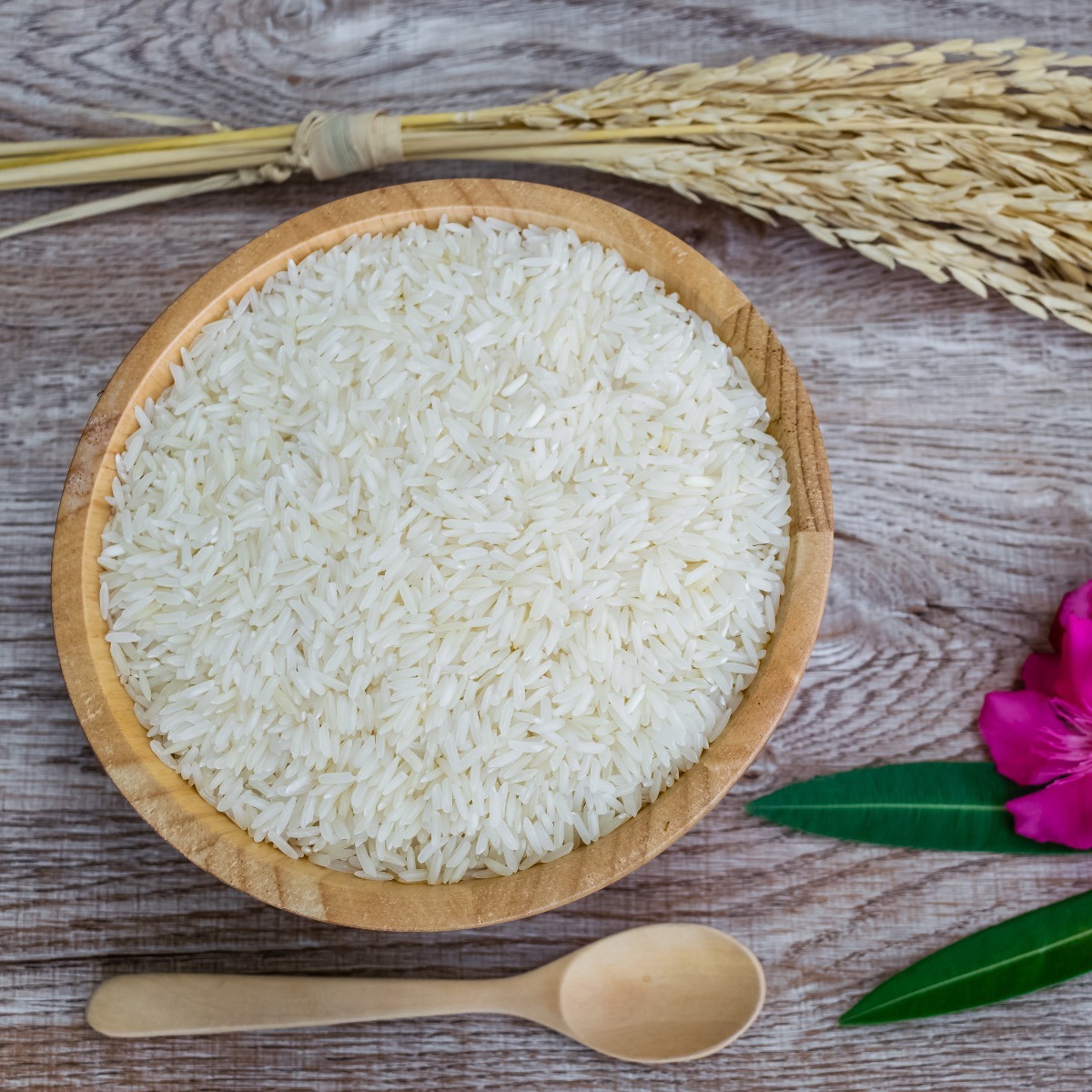
Popular Kinds of Rice
- Jasmine Rice: A long-grain rice grown in Thailand with a light, floral aroma and soft, sticky texture. It’s best used in dishes like fried rice, where the rice needs to stick together, or in sushi rolls.
- Basmati Rice: This long-grain rice is grown in India and Pakistan and has a nutty aroma and a light, fluffy texture. It’s best used in dishes like biryani, where the rice needs to be separate and fluffy.
- Arborio Rice: A short-grain rice is grown in Italy with a high starch content, making it perfect for dishes like risotto, with a desired creamy texture.
- Sushi Rice: This short-grain rice is grown in Japan and specially formulated for sushi. It has a sticky texture and is typically seasoned with a vinegar-based dressing before forming sushi rolls.
- Black Rice: A medium-grain rice is also known as “forbidden rice” and is highly antioxidant. It has a nutty, slightly sweet flavor and a chewy texture. It’s best used in salads, as a side dish, or desserts.
- Wild Rice: A long-grain rice is a type of grass rather than actual rice. It has a nutty, earthy flavor and a chewy texture. It’s best used in salads, as a side dish, or as soups.
- Red Cargo Rice: This medium-grain rice is grown in Thailand and has a nutty aroma, a reddish-brown color, and a sticky texture. It’s best used in dishes like curry or as a bed for stews.
- Calasparra Rice: A short-grain rice is grown in Spain and is best used in dishes like paella, where a firm and separate grain is desired.
- Sticky Rice: A short-grain rice is grown in Southeast Asia and has a sticky texture, making it perfect for dishes
Where Does Rice Grow?
Rice is grown in many countries worldwide, but the most prominent producers are China, India, Indonesia, Bangladesh, and Vietnam. Other significant rice-growing countries include Thailand, the Philippines, Myanmar, Brazil, and Pakistan.
Yes, rice is typically grown in flooded paddy fields with soil as the growing medium. The flooded conditions are ideal for cultivation as it helps to control weeds and pests and provide a stable growing environment for the plants.
It is grown in flooded paddy fields for several reasons:
- First, flooding helps control weeds and pests: The flooded conditions in the paddy fields make it difficult for weeds and pests to survive, which reduces the need for harmful herbicides and pesticides.
- Maintains soil fertility: The flooded fields also help to maintain soil fertility by providing anaerobic conditions that encourage the breakdown of organic matter and the release of nutrients into the soil.
- Helps regulate temperature: Flooding helps regulate temperature, providing a stable environment for the plants to grow.
- Facilitates oxygen exchange: Rice plants absorb oxygen through their roots, and flooded fields allow for a constant exchange of oxygen and CO2 between the plants and the atmosphere.
- Provides irrigation: Flooding the fields provides a source of irrigation for the rice plants, which is essential for their growth, especially in scarce water.
How Is It Harvested?
Rice is harvested using a combination of manual and mechanical methods, depending on the size of the field and the type of rice being grown. The basic steps of rice harvesting are:
- Maturity check: The rice plants are checked for maturity, typically by checking the color and hardness of the grains.
- Cutting: Once the rice is deemed mature, the plants are cut using hand-held knives or machines such as combines.
- Threshing: The cut rice plants are threshed, separating the grain from the straw. This can be done manually by beating the plants with sticks or using a threshing machine mechanically.
- Cleaning: The threshed grain is cleaned to remove any remaining straw, dirt, or other debris. This can be done using a combination of manual sorting and machine-based cleaning.
- Drying: The cleaned grain is then dried to reduce its moisture content, making it easier to store. This can be done in the sun or using artificial drying methods.
- Milling: Finally, the dried grain is milled to remove the outer husk, revealing the white rice kernel. This can be done using traditional manual methods or modern automated rice mills.
How to Buy
When buying rice, there are a few things to consider to ensure you get the best quality.
- Type of Rice: There are many types of rice available, such as jasmine, basmati, Arborio, sushi, black, wild, red cargo, Calasparra, and sticky rice. Each rice type has its unique flavor and texture, so you can choose the one that best fits the recipe you plan to use it in.
- Brand: Not all brands are created equal. Please be sure to look for brands with a good reputation and are known for producing high-quality rice.
- Packaging: Rice should be packaged to preserve its quality and freshness. Please look for rice packaged in airtight, moisture-proof containers to keep it from becoming stale.
- Quality: Check the rice for discoloration, broken grains, or foreign objects. Rice should be clean and free from impurities.
- Organic or Natural: Choose organic or natural rice to avoid chemical fertilizers, pesticides, or other chemical treatments.
- Price: Rice comes in a wide range of prices, so consider your budget when purchasing. Remember that you can find good deals on bulk rice, saving you money in the long run.
What Is the Most Expensive Rice in the World?
The most expensive rice in the world is considered to be the aromatic and flavorful variety called “jasmine rice” or “hom Mali rice.” This premium-grade rice is grown in Thailand and is highly sought after for its unique fragrance, flavor, and texture.
Another expensive variety of rice is “black rice,” also known as “forbidden rice.” This variety of rice is highly prized for its health benefits, as it is rich in antioxidants and has a nutty flavor. It is grown mainly in Asia, particularly in China and Indonesia.
Other high-end rice varieties, such as “basmati rice” from India and Pakistan and “sushi rice” from Japan, are also considered expensive due to their unique flavor and aroma profiles. However, the prices of these varieties can vary greatly depending on the region and the quality of the grain.
How to Store Rice?
Properly storing rice is essential to stay fresh and maintain its quality. Here are a few tips for storing rice:
- Airtight container: Rice should be stored in an airtight container to keep out moisture and prevent it from going stale. Glass or plastic containers with tight-fitting lids work well.
- Cool and dry place: Rice should be stored in a cool, dry place, away from direct sunlight, heat, and humidity. A pantry or cupboard is ideal.
- Avoid the fridge: Rice should not be stored in the refrigerator, as the cool, moist environment can cause the rice to spoil more quickly and change its texture.
- Label and date: Label the container with the type of rice and the date it was purchased. This will help you track how long the rice has been stored.
- Cooked rice: Cooked rice can be stored in an airtight container in the refrigerator for up to 5 days or in the freezer for up to 6 months. Reheat it until steaming hot before eating.
- Natural brown rice: Brown rice can be stored for up to 6 months in an airtight container in a cool, dry place.
- White rice: White rice can be stored for up to 1 year in an airtight container in a cool, dry place.
Rice should be stored in an airtight container in a cool, dry place, away from direct sunlight, heat, and humidity. Please don’t forget to store in the refrigerator. Label and date the container, and use the rice within a reasonable time frame according to the type of rice and if it’s cooked or not.
Why Do You Have to Wash and Strain Rice Before Cooking?
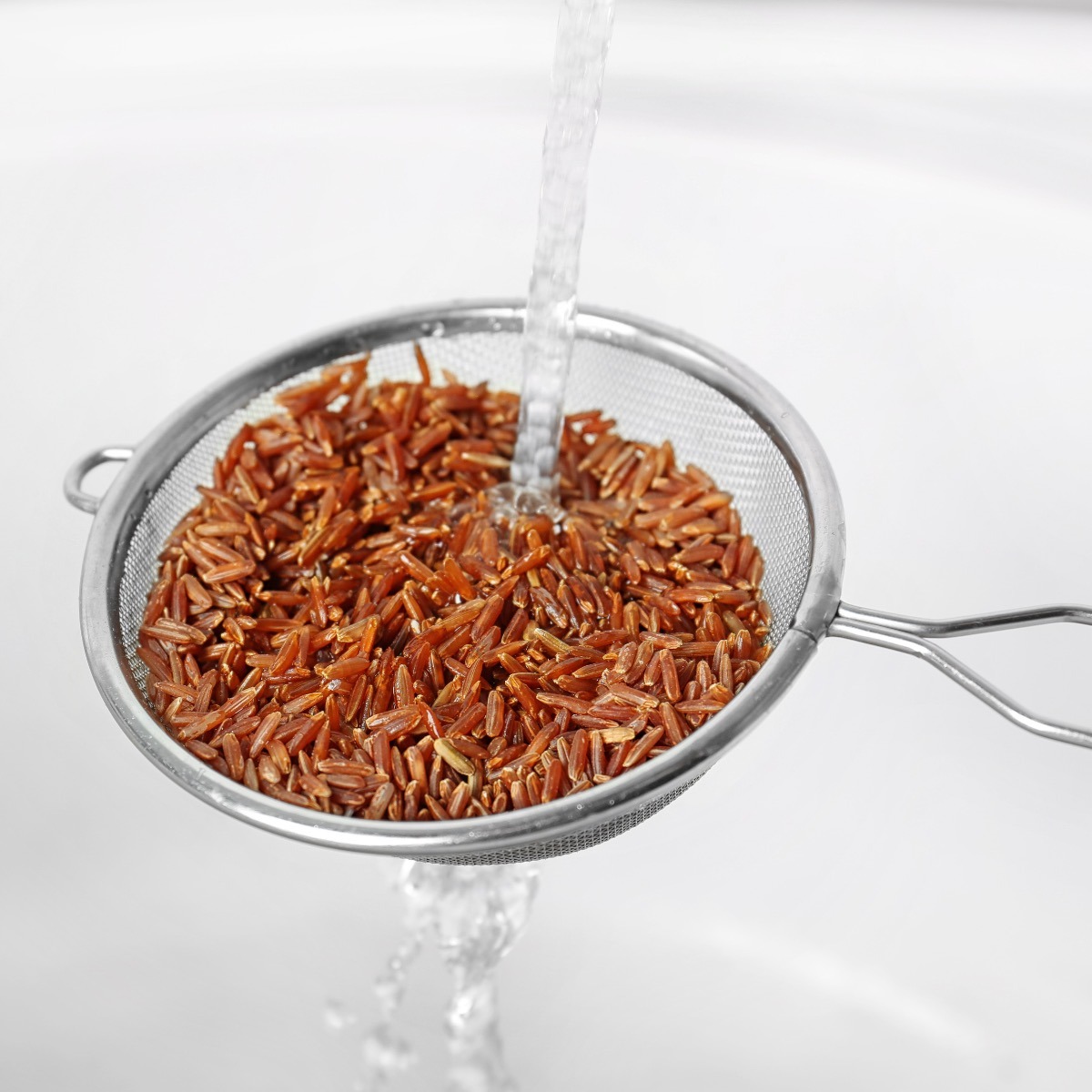
Washing and straining rice before using it is an essential step in the cooking process. There are a few reasons why this is done:
- Removing impurities: Rice can contain dirt, dust, and other impurities that must be removed before cooking. Washing the rice under running water helps to remove these impurities and ensure that the rice is clean and safe to eat.
- Removing excess starch: Rice naturally contains starch, making the cooked rice sticky and gummy if not removed. Washing the rice before cooking helps remove some excess starch, resulting in fluffier, separate rice grains.
- Enhancing flavor: Washing also helps enhance the flavor by rinsing away any excess powder or dust that may have accumulated on the rice during storage.
- Improve texture: Washing it also helps improve the texture by removing excess starch and impurities, making the rice more tender and separate.
- Consistency: Washing the rice first helps achieve a more consistent texture in the final product.
To wash and strain the rice, place it in a fine-mesh strainer and rinse it under running water, using your fingers to agitate it and remove impurities. Once the water runs clear, the rice is ready to be cooked. It’s important to strain it to ensure all the excess water is removed before cooking.
Why Have I Found Mealy Bugs in My Sealed Packages of Rice?
Mealybugs are a common pest that can infest stored grain products like rice. They are attracted to the starch and sugar in the grains, which serve as a food source for the bugs. As a result, mealybugs can infest grain stores and packaging, causing damage to the grain and reducing its quality.
There are several reasons why you might find mealybugs in your rice packages:
- Poor storage conditions: Rice is susceptible to insect infestations in warm, humid environments. Mealybugs can thrive in these conditions and quickly multiply, infesting the grain and spreading to other packages.
- Contamination during the growing and harvesting process: Mealybugs can infest rice crops during the growing and harvesting process and can be carried over into storage containers.
- Poor packaging: Rice packaged in porous or damaged containers is more susceptible to insect infestations. Mealybugs can enter the package through holes or cracks in the packaging and infest the grain.
To prevent mealybugs from infesting your rice, storing it in a cool, dry place and using tight-fitting containers in good condition. It’s also a good idea to check the packaging before purchasing and to purchase from a reputable source that follows good sanitation practices.
How to Cook Rice
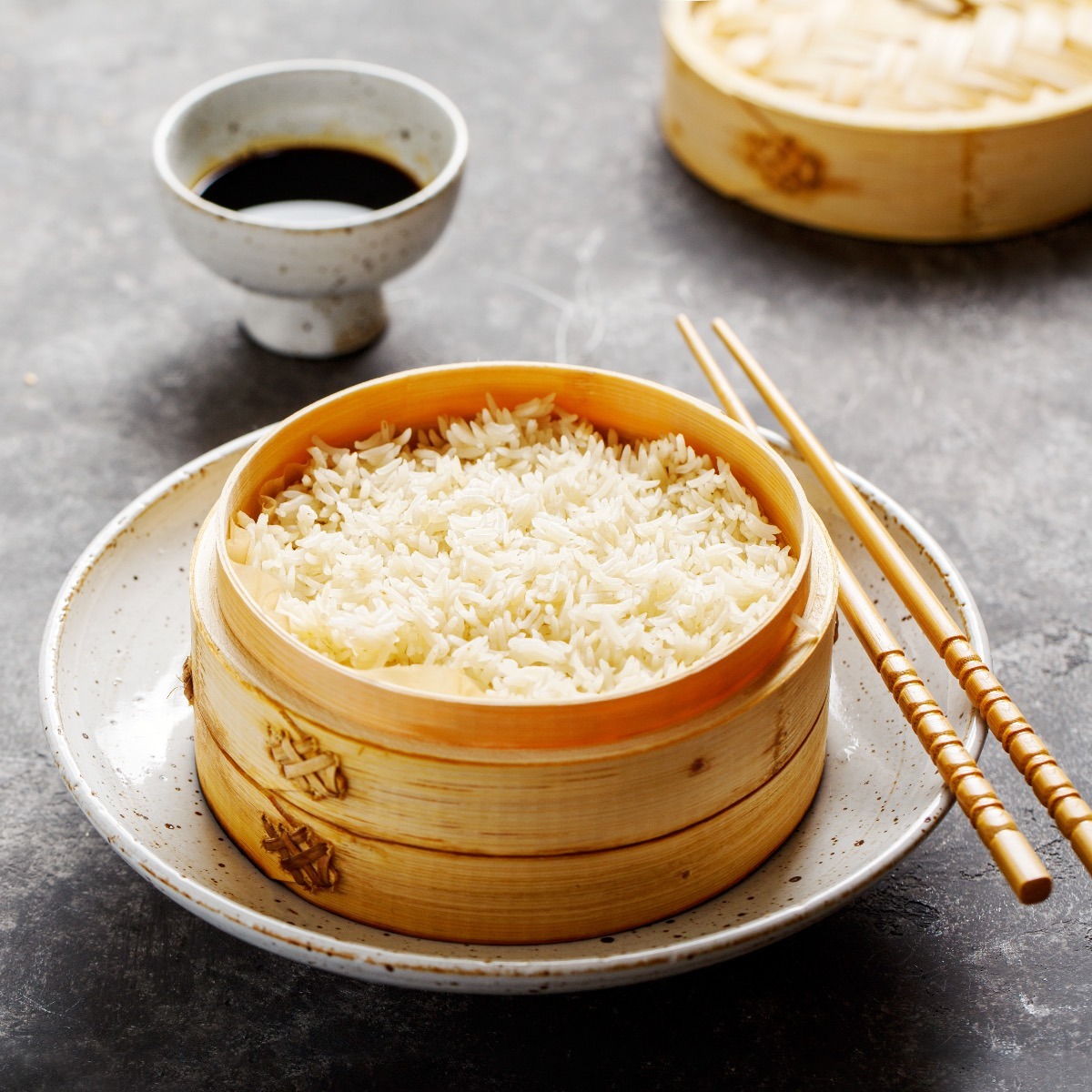
There are many different ways to cook rice, each with instructions and considerations. However, here are a few popular methods:
- Stovetop cooking: This is a simple method for cooking rice. To cook rice on the stovetop, combine rice and water (or broth) in a saucepan and bring to a boil. Reduce heat, cover, and simmer for 18-20 minutes or until rice is tender and water is absorbed.
- Rice cooker: This is a convenient way to cook rice as it eliminates the need to monitor the pot while it cooks. You must measure the rice and liquid and switch on the cooker. The cooker will automatically shut off when the rice is done.
- Pressure cooking: Rice can also be cooked in a pressure cooker. This method requires less water and cooks faster than the stovetop method. To cook rice in a pressure cooker, combine rice, water, and salt and bring it to pressure. Cook for about 4-6 minutes, then release the pressure before opening the lid.
- Microwave: Rice can also be cooked in the microwave. This method is relatively quick but may not produce as consistent results as other methods. To cook rice in the microwave, combine rice, water, and salt in a microwave-safe dish and cover. Cook on high for 10-12 minutes or until rice is tender and water is absorbed.
- Steaming: Rice can also be cooked by steaming. This method can be done in a steamer basket or a bamboo steamer. To cook rice by steaming, combine rice and water in a steamer basket or bamboo steamer and steam over rapidly boiling water for 18-20 minutes, or until rice is tender and water is absorbed.
Each method has advantages and disadvantages; the best method depends on your preferences and available equipment. Additionally, different types of rice may require different amounts of liquid and cooking times, so check the package instructions for specific cooking instructions.
Best Ways To Reheat
There are a few different ways to reheat cooked rice, but some methods work better than others to maintain the quality and texture. Here are a few of the best ways to reheat cooked rice:
- Stovetop: One of the best ways to reheat cooked rice is on the stovetop. Add the rice to a saucepan with a small amount of water or broth (about two tablespoons per cup) and heat over medium-low heat, occasionally stirring, until the rice is heated through.
- Microwave: Another quick and easy way to reheat cooked rice is in the microwave. Place the rice in a microwave-safe dish, add a small amount of water or broth (about two tablespoons per cup of rice), and cover the dish with a lid or microwave-safe plate. Heat on high for 1-2 minutes, stirring halfway through, until the rice is heated through.
- Oven: You can also reheat cooked rice in the oven. Place the rice in an oven-safe dish and add a small amount of water or broth (about two tablespoons per cup of rice). Cover the dish with aluminum foil and place it in a preheated 350-degree oven for about 15-20 minutes or until the rice is heated.
- Steamer: You can also use a steamer to reheat cooked rice. Place the rice in a heatproof dish, add a small amount of water or broth (about two tablespoons per cup), and steam it for about 10-15 minutes or until the rice is heated through.
Whichever method you choose, stir the rice occasionally to ensure it heats evenly and prevents burning. If the rice is dry or hard, add more water or broth to help it rehydrate.
Rice Pudding Recipe
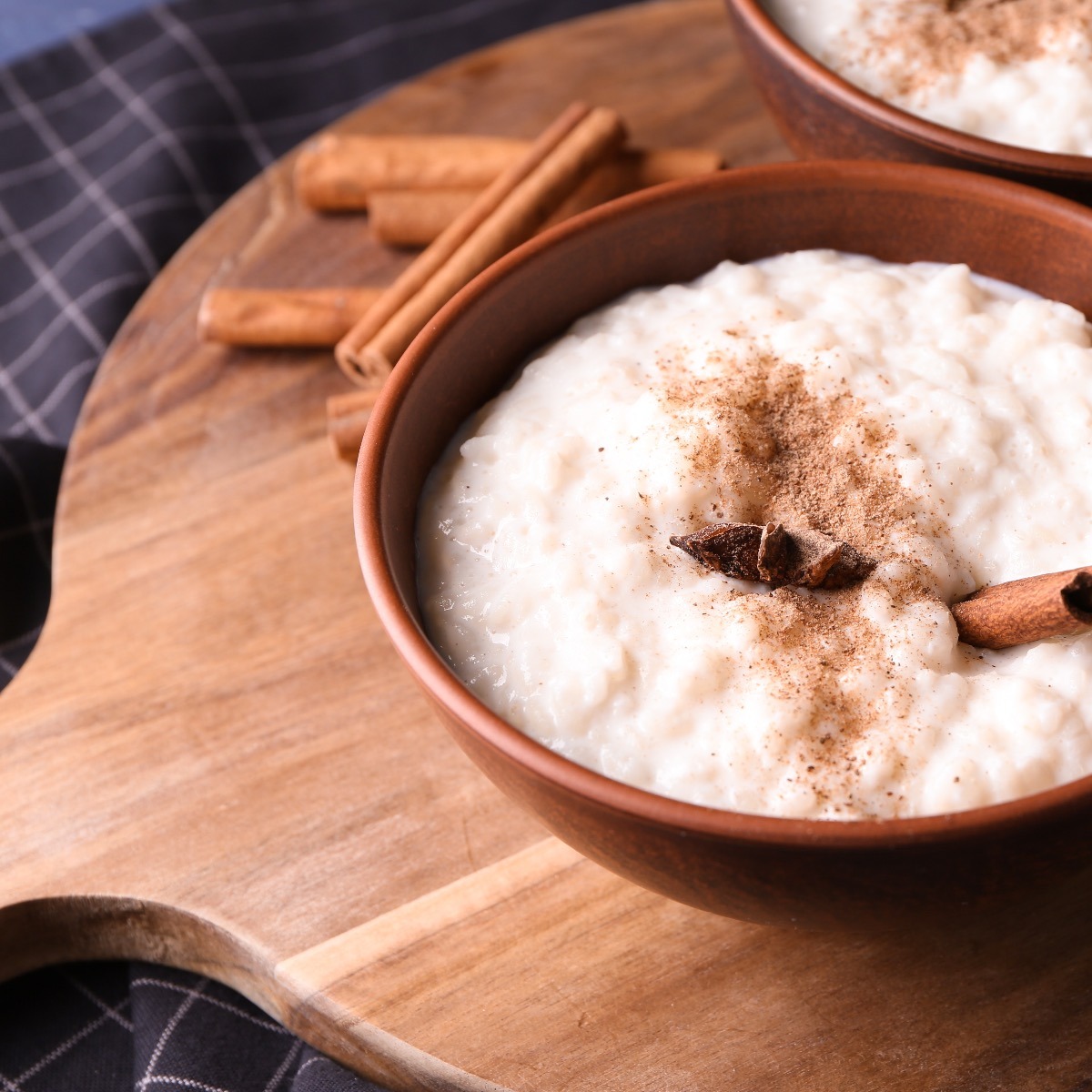
I have to admit, I don’t eat a lot of rice pudding anymore, but as a kid, my dad would make it all the time for dessert. I miss having homemade rice pudding, so I want to share this recipe with you.
Rice pudding is a sweet, creamy dessert made from cooked rice, milk, and sugar and often flavored with vanilla, cinnamon, nutmeg, or other spices. It can be served warm or cold and is often garnished with fruit, nuts, or a sprinkle of cinnamon or nutmeg.
Basic Rice Pudding
Ingredients
- 1 cup white rice
- 4 cups milk
- ½ cup sugar
- 1 teaspoon vanilla extract
- ¼ teaspoon salt
- 1 cinnamon stick optional
- ¼ cup raisins optional
Instructions
- Rinse the rice in cold water and drain.
- In a medium saucepan, combine the rice, milk, sugar, vanilla extract, salt, and cinnamon stick (if using).Bring the mixture to a boil over medium-high heat, then reduce the heat to low and simmer for about 20-25 minutes, or until the rice is tender and the pudding is thick and creamy.
- Stir in the raisins (if using) and cook for an additional 5 minutes.
- Remove the cinnamon stick and discard.
- Serve warm or chilled, garnished with your choice of fruit, nuts, or a sprinkle of cinnamon or nutmeg.

